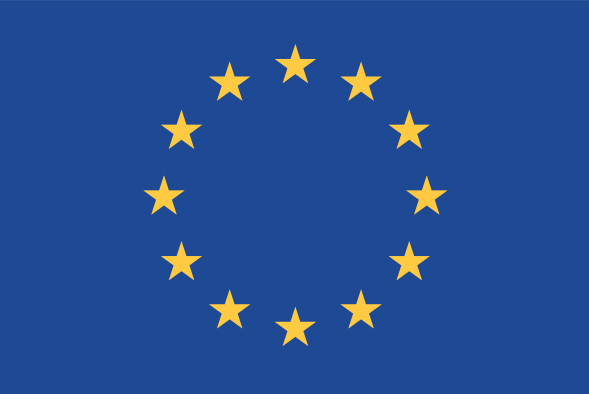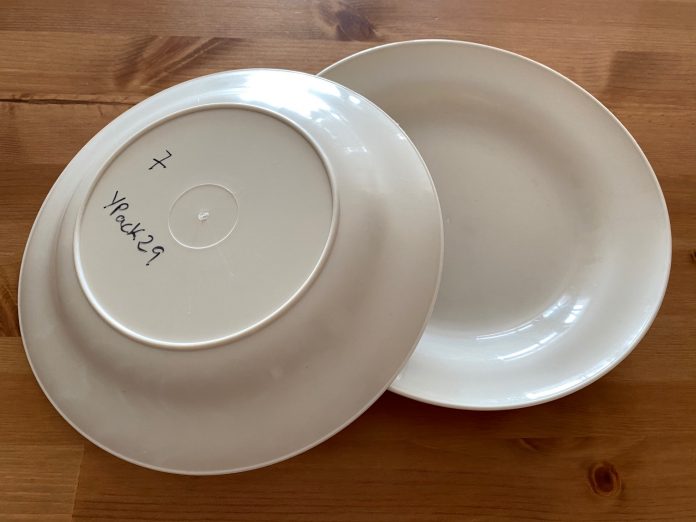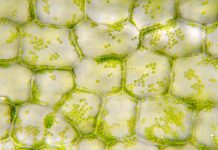Funded by the BBI JU programme within the EU’s Horizon 2020 initiative, the Usable Packaging project seeks to dramatically reduce the use of environmentally harmful fossil fuel-based packaging by developing high-performance bio-alternatives
The development of innovative technologies in Europe over the last two decades has led to the growth of an industry manufacturing new materials from bio-based, renewable resources (plants). Whilst plant-based applications (think of cotton, linen, starches in the paper industry) are as old as humanity, using plants to produce new types of plastics is very recent.
Polymers – the molecules that form the plastic material – can now be made from plant feedstocks such as sugar, potatoes, tapioca, cornstarch and others being transformed in industrial biorefineries.
Bioplastics for a circular bioeconomy
These “bioplastics” (let us call them so for simplicity) have several benefits:
- Being from renewable resources.
- Their carbon footprint is usually lower than traditional, fossil-fuel plastics.
- When they are engineered to biodegrade in composting facilities, their end-of-life processes – either biodegradation, composting or recycling through anaerobic digestion (AD) – guarantees they are benign to the environment.
- They can be used to collect the organic waste (biowaste) we produce, then sent back to composting and from there, back to soil.
The bio-based solutions developed through the project therefore create a sustainable, circular value chain – a cycle known as “circular bioeconomy”.
Using bioplastics to collect biowaste can also help reduce plastic waste, by eliminating the risk of non-recyclable plastics entering composting and AD plants. Bioplastics decomposing during treatment means that the compost goes back to farmland free of plastic contamination, which is currently a major environmental issue, destined to increase across the EU once obligatory household food waste collections enter into force post-2023.
The Usable Packaging project goes one step further towards the greater sustainability of these materials by producing them from a novel feedstock: by-products from the food industry itself. Imagine a future in which residues and by-products from the food we produce, process and consume, become feedstocks to manufacture the packaging needed to carry that same food safely to market. This packaging is then brought safely back to composting and AD for processing into biogas and biofertilisers. What a future! Zero waste: this is the circular bioeconomy in practice.
The science behind Usable Packaging
The technical revolution of using food processing by-products to produce packaging materials that can be organically composted is at the heart of the Usable Packaging project.
The key scientific goal is to create a portfolio of bio-packaging solutions based on bioplastics with adequate physical and chemical properties for their intended use.
The food, drinks, pharmaceutical and clothing industries have a wide range of packaging needs. Taking into account the precise standard request for the various packaging designs, researchers have been working to convert the feedstock into poly-hydroxy-alkanoates (PHA) by advanced processes using both mixed and pure microbial cultures. Using fermentation technology to fine-tune the PHA functionality to cover all ranges of target properties, the packaging items are then manufactured from the base material through state-of-the-art technologies such a compounding, blown film processing, electrospinning and multilayer coextrusion.
The scientists are thus working to extend and control PHA functionalities to manufacture packaging products that can replace their petrochemical peers in high-performance packaging and at the same time have the potential for biotech recycling – which involves reconverting the disposed packaging item into the same PHA production asset in which they were produced and obtaining again a virgin material as opposed to a secondary product.
Early successes
Launched in June 2019, the three-year project has already delivered promising results despite the constraints of the COVID-19 pandemic.
The first successes of the Usable Packaging Research were in the manufacture of compostable straws and cutlery made from PHA in the early part of 2020.
“PHA is the only polymer that can be produced from feedstock sourced from a large range of agriculture and agro-industries such as food processing,” says Project Coordinator Prof. Lagarón, from Spain’s Consejo Superior de Investigaciones Scientificas. “It can be obtained at a substantially lower cost than the materials currently on the market and has clear environmental benefits. The compostable straws and cutlery are examples of the value of the Usable Packaging project research in developing viable, sustainable alternatives to fossil-based, toxic, packaging materials.”
A few months later, the Lagarón family was the first to use a new bio-based, re-usable and compostable plates manufactured as another outcome of the project. “We wanted to be the first to try them out,” continues Prof Lagarón. “After multiple uses and washes in the dishwasher, the plates look like new. The family loves them. They have sufficient strength to be launched as a practical application and I’m very proud of this result.”
The re-usable plate is the first of the Usable Packaging products to be successfully launched for practical application by customers. It is made of a PHA compound that is compostable and tested to biodegrade in the environment.
Not without legal challenges
However, there are certain challenges that still need to be overcome. A widespread view persists that compostable plastics can be a pollutant in plastic waste and therefore disturb the plastics recycling process. Plastic recycling is a major weakness in the overall waste management system, worldwide. Legislators often confuse plastics recycling with the use of compostable materials in the chain of biowaste recycling, or composting.
Project partners have called for greater legislative clarity to help develop the end-user markets for these products and materials, because of their value in ensuring the circularity of biowastes. Currently, under the Single Use Plastic Directive, in most countries, even materials which are compostable, like those in the Usable Packaging project and destined to composting and AD, are subject to market restrictions and great uncertainty about their future deployment.

Usable Packaging has received funding from the European Union’s HORIZON 2020 Research Programme under the Grant Agreement no. 836884.
*Please note: This is a commercial profile











